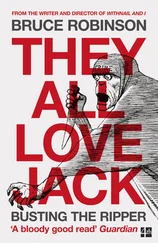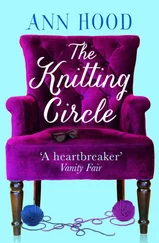Bruce Hood - The Self Illusion
Здесь есть возможность читать онлайн «Bruce Hood - The Self Illusion» весь текст электронной книги совершенно бесплатно (целиком полную версию без сокращений). В некоторых случаях можно слушать аудио, скачать через торрент в формате fb2 и присутствует краткое содержание. ISBN: , Издательство: Constable & Robinson, Жанр: Старинная литература, на английском языке. Описание произведения, (предисловие) а так же отзывы посетителей доступны на портале библиотеки ЛибКат.
- Название:The Self Illusion
- Автор:
- Издательство:Constable & Robinson
- Жанр:
- Год:неизвестен
- ISBN:9781780331379
- Рейтинг книги:5 / 5. Голосов: 1
-
Избранное:Добавить в избранное
- Отзывы:
-
Ваша оценка:
- 100
- 1
- 2
- 3
- 4
- 5
The Self Illusion: краткое содержание, описание и аннотация
Предлагаем к чтению аннотацию, описание, краткое содержание или предисловие (зависит от того, что написал сам автор книги «The Self Illusion»). Если вы не нашли необходимую информацию о книге — напишите в комментариях, мы постараемся отыскать её.
The Self Illusion — читать онлайн бесплатно полную книгу (весь текст) целиком
Ниже представлен текст книги, разбитый по страницам. Система сохранения места последней прочитанной страницы, позволяет с удобством читать онлайн бесплатно книгу «The Self Illusion», без необходимости каждый раз заново искать на чём Вы остановились. Поставьте закладку, и сможете в любой момент перейти на страницу, на которой закончили чтение.
Интервал:
Закладка:
56. J. M. Allman, K. K. Watson, N. A. Tetreault and A. Y. Hakeem, ‘Intuition and autism: A possible role for Von Economo neurons’, Trends in Cognitive Sciences , 9 (2005), 367–73.
57. A. L. Beaman, E. Diener and B. Klentz, ‘Self-awareness and transgression in children: Two field studies’, Journal of Personality and Social Psychology , 37 (1979), 1835–46.
58. D. Elkind, ‘Egocentrism in adolescence’, Child Development , 38 (1967), 1025–34.
59. S.-J. Blakemore, ‘The social brain in adolescence’, Nature Reviews Neuroscience , 9 (2008), 267–77.
60. J. Pfeifer, M. Lieberman and M. Dapretto, ‘“I know you are but what am I?”: Neural bases of self and social knowledge retrieval in children and adults’, Journal of Cognitive Neuroscience , 19:8 (2007), 1323–37.
61. S.-J. Blakemore, H. den Ouden, S. Choudhury and C. Frith, ‘Adolescent development of the neural circuitry for thinking about intentions’, Social Cognitive and Affective Neuroscience , 2:2 (2007), 130–39.
62. S. Burnett, G. Bird, J. Moll, C. Frith and S.-J. Blakemore, ‘Development during adolescence of the neural processing of social emotion’, Journal of Cognitive Neuroscience , 21:9 (2009), 1736–50.
63. L. Steinberg, ‘A neurobehavioral perspective on adolescent risk taking’, Developmental Review , 28 (2008), 78–106.
64. The story of Storm can be found at J. Poisson, ‘Parents keep child’s gender secret’, Star (21 May 2011), www.thestar.com/article/995112.
65. E. E. Maccoby, The Two Sexes: Growing Up Apart, Coming Together (Cambridge, MA: Belknap Press, 1998).
66. C. L. Martin and D. Ruble, ‘Children’s search for gender cues: Cognitive perspectives on gender development’, Current Directions in Psychological Science , 13 (2004), 67–70.
67. A. S. Rossi, ‘A biosocial perspective on parenting’, Daedalus , 106 (1977), 1–31.
68. J. Condry and S. Condry, ‘Sex differences: A study of the eye of the beholder’, Child Development , 47 (1976), 812–19.
69. C. Smith and B. Lloyd, ‘Maternal behavior and perceived sex of infant: Revisited’, Child Development , 49 (1978), 1263–5.
70. D. Fisher-Thompson, ‘Adult toy purchase for children: Factors affecting sex-typed toy selection’, Journal of Applied Developmental Psychology , 14 (1993), 385–406.
71. J. L. R. Delk, R. B. Madden, M. Livingston and T. T. Ryan, ‘Adult perceptions of the infant as a function of gender labeling and observer gender’, Sex Roles , 15 (1986), 527–34.
72. A. Pomerleau, D. Bolduc, G. Malcuit and L. Cossette, ‘Pink or blue: Environmental gender stereotypes in the first two years of life’, Sex Roles , 22 (1990), 359–67.
73. S. K. Thompson, ‘Gender labels and early sex-role development’, Child Development , 46 (1975), 339–47.
74. S. A. Gelman, M. G. Taylor and S. P. Nguyen, Mother-child Conversations about Gender , Monographs of the Society for Research in Child Development, 69:1:275 (Boston, MA: Blackwell, 2004).
75. J. Dunn, I. Bretherton and P. Munn, ‘Conversations about feeling states between mothers and their young children’, Developmental Psychology , 23 (1987), 132–9.
76. K. Crowley, M. A. Callanan, H. R. Tenenbaum and E. Allen, ‘Parents explain more often to boys than to girls during shared scientific thinking’, Psychological Science , 12 (2001), 258–61.
77. M. Sadker and D. Sadker, Failing at Fairness: How America’s Schools Cheat Girls (New York, NY: Scribner’s, 1994).
78. K. C. Kling, J. S. Hyde, C. J. Showers and B. N. Buswell, ‘Gender differences in self-esteem: A meta-analysis’, Psychological Bulletin , 125 (1999), 470–500.
79. D. F. Halpern, ‘A cognitive-process taxonomy for sex differences in cognitive abilities’, Current Directions in Psychological Science , 13 (2004), 135–9.
80. R. L. Munro, R. Hulefeld, J. M. Rodgers, D. L. Tomeo and S. K. Yamazaki, ‘Aggression among children in four cultures’, Cross-Cultural Research , 34 (2000), 3–25.
81. T. R. Nansel, M. Overpeck, R. S. Pilla, W. J. Ruan, B. Simons-Morton and P. Scheidt, ‘Bullying behaviors among US youth: Prevalence and association with psychosocial adjustment’, Journal of the American Medical Association , 285 (2001), 2094–2100.
82. P. A. Jacobs, M. Brunton, M. M. Melville, R. P. Brittain and W. F. McClemont, ‘Aggressive behaviour, mental sub-normality and the XYY male’, Nature , 208 (1965), 1351–2.
83. M. C. Brown, ‘Males with an XYY sex chromosome complement’, Journal of Medical Genet ics, 5 (1968), 341–59.
84. H. A. Witkin et al., ‘Criminality in XYY and XXY men’, Science , 193 (1976), 547–55.
85. A. Caspi, J. McClay, T. E. Moffitt, J. Mill, J. Martin, I. W. Craig, A. Taylor and R. Poulton, ‘Role of genotype in the cycle of violence in maltreated children’, Science , 297 (2002), 851–4.
86. E. Yong, ‘Dangerous DNA: The truth about the “warrior gene”’, New Scientist (7 April 2010).
87. G. Naik, ‘What’s on Jim Fallon’s mind? A family secret that has been murder to figure out’, Wall Street Journal (30 November 2009).
88. Interview with Jim Fallon by Claudia Hammond for All in the Mind , BBC Radio 4 (26 April 2011).
89. B. D. Perry, ‘Incubated in terror: Neurodevelopmental factors in the “Cycle of Violence”’, in J. Osofsky (ed.), Children, Youth and Violence: The Search for Solutions (New York, NY: Guilford Press, 1997), 124–48.
90. W. Mischel, Personality and Assessment (New York, NY: Wiley, 1968).
91. W. Mischel, Y. Shoda and M. L. Rodriguez, ‘Delay of gratification in children’, Science , 244 (1989), 933–8.
92. Y. Shoda, W. Mischel and P. K. Peake, ‘Predicting adolescent cognitive and social competence from preschool delay of gratification: Identifying diagnostic conditions’, Developmental Psychology , 26 (1990), 978–86; W. Mischel and O. Ayduk, ‘Willpower in a cognitive-affective processing system: The dynamics of delay of gratification’, in R. F. Baumeister and K. D. Vohs (eds), Handbook of Self-Regulation: Research, Theory, and Applications (New York, NY: Guilford, 2004), 99–129.
93. P. H. Wender, ADHD: Attention-Deficit Hyperactivity Disorder in Children and Adults (Oxford: Oxford University Press, 2002).
94. M. Strock, Attention Deficit Hyperactivity Disorder (London: National Institute of Mental Health, 1996), available at http://web.archive.org/web/20080916130703/http://www.nimh.nih.gov/health/ publications/adhd/nimhadhdpub.pdf.
95. G. Kochanska, K. C. Coy and K. T. Murray, ‘The development of self-regulation in the first four years of life’, Child Development , 72 (2001), 1091–1111.
96. D. Parfit, Reason and Persons (Oxford: Oxford University Press, 1986).
97. S. Gelman, The Essential Child: Origins of Essentialism in Everyday Thought (Oxford: Oxford University Press, 2003).
98. P. Bloom, How Pleasure Works: The New Science of Why We Like What We Like (New York, NY: W. W. Norton and Company, 2010).
4 The Cost of Free Will
1. G. M. Lavergne, A Sniper in the Tower: The Charles Whitman Murders (Denton, TX: University of North Texas Press, 1997).
2. J. M. Burns and R. H. Swerdlow, ‘Right orbitofrontal tumor with pedophilia symptom and constructional apraxia sign’, Archives of Neurology , 60 (2003), 437–40.
3. D. M. Eagleman, Incognito: The Secret Lives of the Brain (Edinburgh: Canongate, 2011).
Читать дальшеИнтервал:
Закладка:
Похожие книги на «The Self Illusion»
Представляем Вашему вниманию похожие книги на «The Self Illusion» списком для выбора. Мы отобрали схожую по названию и смыслу литературу в надежде предоставить читателям больше вариантов отыскать новые, интересные, ещё непрочитанные произведения.
Обсуждение, отзывы о книге «The Self Illusion» и просто собственные мнения читателей. Оставьте ваши комментарии, напишите, что Вы думаете о произведении, его смысле или главных героях. Укажите что конкретно понравилось, а что нет, и почему Вы так считаете.












